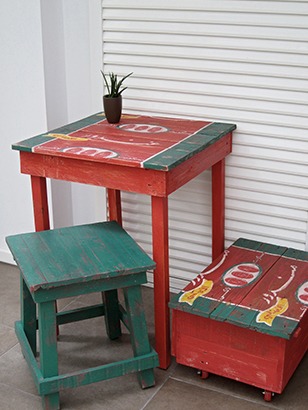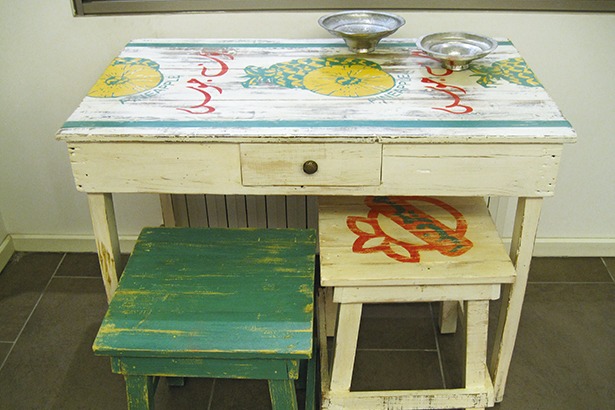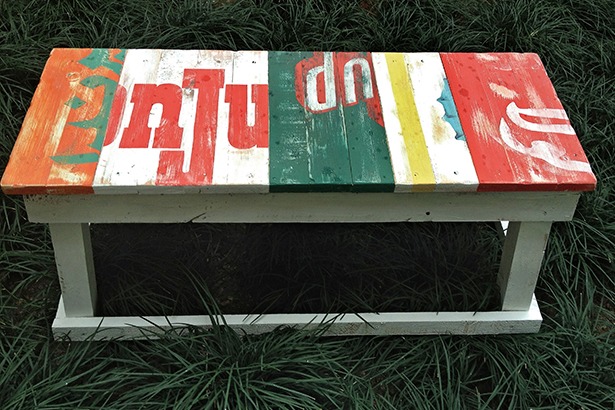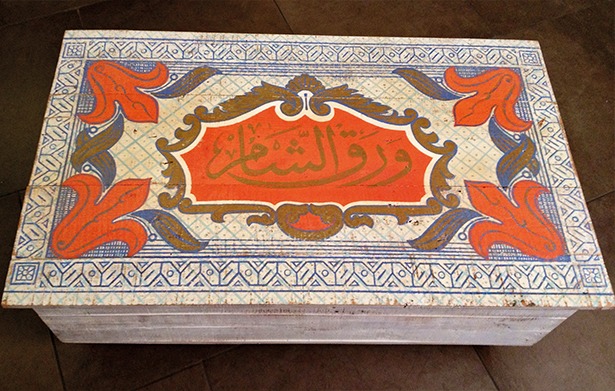Specialized in murals, interiors, decorative finishing and restoration of antique murals, SUMI Furniture, launched in 2011 by Nathalie Yared, recycles old wooden pieces into items that trigger nostalgia and childhood memories.
If you are looking for something that is a little different, but still gives you the feel of Lebanon SUMI is the place to visit. We sat down with Yared to find out what inspires her.
What is the idea behind SUMI Furniture?
Well, my objectives involved both form and content. First of all, I wanted to work on recycling furniture. I wanted to show that furniture could be given a second life. Second, I wanted to pay tribute to popular culture by using well-known brand logos that reflect our childhood.
How did it all start?
It all started when I found an old kitchen table and painted it, just for fun for me, with the Bonjus pineapple drink logo. I was stunned by the results so I decided to take it a step further.
What do these logos represent to you?
In a city that is segmented, constantly changing and in which we have lost most of our benchmarks, I realized that these logos were among the few things that could link us all. Whether you are rich or poor, Muslim or Christian, a city or rural dweller, you will always associate ‘Ras El Abed’ (now called Traboush), a chocolate treat made by Ghandour, with a time in your childhood. Some of these logos have disappeared or have not been seen since the late 80’s, early 90’s. Seeing them again reminds people of the precious moments of comfort these products gave us during the civil war era.
Do you do all the work yourself?
I have a small team. We are three people in all. I pick the furniture, restore it and choose the logos, but the actual drawing and painting is done by all three of us, as it is a very long process.
How much effort goes into a piece and how long does it take to finish?
It takes quiet a long time to finish a piece. First of all, it depends on the piece of furniture, whether it is made from scratch using recycled wood or used as is. In both cases it is sent to the carpenter for repair and restoration. We then strip it of its original color. After this process, the painting phase begins in my atelier. First there’s the base color and then the drawings. Each piece is completely hand painted.
What has been the reaction to your work?
Much to my surprise, the furniture has been very favorably received! Although many pop artists and designers have been using these logos way before I have, when I offered my take on them, I thought the public would already be jaded, but I was wrong.
Do you have a favorite piece?
The cigarette rolling paper brand ‘waraq el sham’ is probably my favorite piece so far because of the intricacy of the design and its overall sobriety and choice of colors.
What’s next?
SUMI Furniture has just started. We have a lot of private orders and we are looking forward to taking part in upcoming events and fairs. In August, we finished a new collection.
In parallel, I am still teaching decorative painting classes offered at my studio for small groups of up to four students. Different techniques are taught such as wood graining, marbling imitation, gilding and silvering, patinas, and trompe l’oeil, painted on various pieces of furniture. Founded in 1997, my company Nathalie Yared Peinture Decorative provides professional painting services including exterior walls, interiors, decorative finishing and restoration of antique paintings. And of course, I have my restoration work for old villas and churches.
Normally, when an object is recycled, it is actually downcycled as in, it is broken down into something of lesser quality, a process that not only consumes energy but also ends with the material being used in inferior roles. Upcycling on the other hand, adds value by transforming or reinventing an otherwise disposable item into something of higher quality, and this is exactly what SUMI is doing. It’s the ultimate in reuse and sustainability, all the while safeguarding popular elements of Lebanese culture.
Take a look:
Article edited on November 9, 2021
Loading




